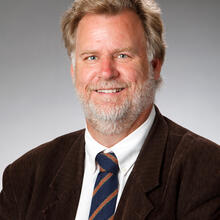Bread of Heaven
Sometimes I find myself in a line-up with a bunch of strangers, shuffling down the aisle in church, and I forget that I am standing with my family on the pathway to heaven about to partake of the body and blood of Christ offered once for all time for the salvation of the world. Perhaps you have walked down that aisle with me?
The sacrificial nature of the Eucharist is clear from Jesus’ words and actions at the Last Supper, but hearing the words of institution over and over can become a part of a rote behavior that obscures their live-giving meaning. In the words of Mark’s Gospel, “While they were eating, he took a loaf of bread, and after blessing it he broke it, gave it to them, and said, ‘Take; this is my body.’ Then he took a cup, and after giving thanks he gave it to them, and all of them drank from it. He said to them, ‘This is my blood of the covenant, which is poured out for many.’”
The primary sacrificial context for the Last Supper comes from the Passover feast in which the meal is situated, but the offering of Jesus’ body and blood on behalf of the “many”—that is, for all people—takes on and reinterprets much more of the sacrificial imagery of the Old Testament. The bread that he broke is a sign of his body, which he will offer in death, the true bread of the presence. The “blood of the covenant” shares in the imagery of the ceremony in Exodus in which Moses sprinkled blood on the people of Israel as a sign of their obedience to the covenant. The phrase “poured out for many” draws us inexorably to the Suffering Servant of Is 53:12, who pours himself out as an expiation for the sins of the people.
These sacrificial realities are not alien to the Last Supper. They are an inherent part of Jesus’ actions, which he interprets for his apostles prior to the crucifixion. But for these understandings to come to the fore, the first Christians had to meditate and reflect on what Jesus had done and what this meant for the continuing life of the church.
The author of the Letter to the Hebrews makes it his mission to explicate and explain what took place on Calvary in light of the Jewish sacrificial system. First, Hebrews explains that Jesus is not only the sacrifice for the sins of the world but also the perfect high priest. Second, the perfect high priest “entered once for all into the Holy Place, not with the blood of goats and calves, but with his own blood, thus obtaining eternal redemption.” Third, through the offering of himself as the perfect sacrifice, Jesus “is the mediator of a new covenant, so that those who are called may receive the promised eternal inheritance.”
Joachim Jeremias wrote in Eucharistic Words, “If, immediately following his words on the bread and immediately following his words on the wine, Jesus gives the same bread and the same wine to his disciples, this act signifies his giving them a share, by their eating and drinking, in the atoning power of his death.” And that atoning power has as its goal eternal life with Jesus. But it was not just those who sat at the table with Jesus and ate bread and drank wine with him who are able to share in the atoning power of Jesus’ sacrifice; Jesus opened the way for all to share in the eternal inheritance.
The Eucharist fulfills the sacrificial system and gives us the ability to share in the power of Christ’s atoning death here and now, but it also prepares us for our eternal inheritance. With the rest of God’s family, we will share in the Messianic banquet. Jesus tells us “many will come from east and west and will eat with Abraham and Isaac and Jacob in the kingdom of heaven” (Mt 8:11). Only the true bread of heaven, the perfect high priest, could offer himself once for all and so pave the way for our entry into the Temple made not with hands. So walk with joy toward the Temple prepared for us for eternity, as you are about to share a foretaste of the unending banquet.
This article also appeared in print, under the headline “Bread of Heaven ,” in the May 25-June 1, 2015, issue.







